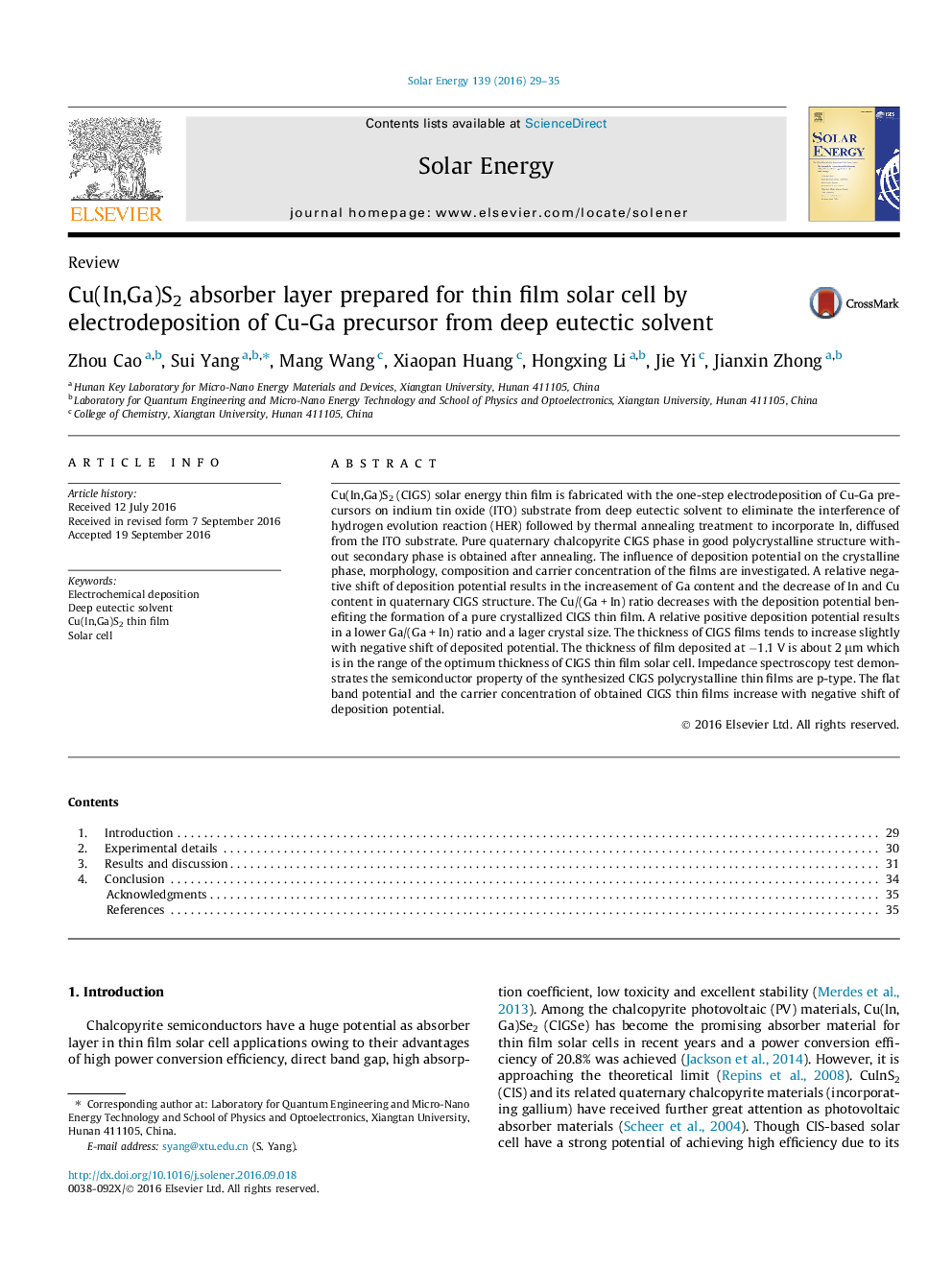| Article ID | Journal | Published Year | Pages | File Type |
|---|---|---|---|---|
| 5451429 | Solar Energy | 2016 | 7 Pages |
Abstract
Cu(In,Ga)S2 (CIGS) solar energy thin film is fabricated with the one-step electrodeposition of Cu-Ga precursors on indium tin oxide (ITO) substrate from deep eutectic solvent to eliminate the interference of hydrogen evolution reaction (HER) followed by thermal annealing treatment to incorporate In, diffused from the ITO substrate. Pure quaternary chalcopyrite CIGS phase in good polycrystalline structure without secondary phase is obtained after annealing. The influence of deposition potential on the crystalline phase, morphology, composition and carrier concentration of the films are investigated. A relative negative shift of deposition potential results in the increasement of Ga content and the decrease of In and Cu content in quaternary CIGS structure. The Cu/(Ga + In) ratio decreases with the deposition potential benefiting the formation of a pure crystallized CIGS thin film. A relative positive deposition potential results in a lower Ga/(Ga + In) ratio and a lager crystal size. The thickness of CIGS films tends to increase slightly with negative shift of deposited potential. The thickness of film deposited at â1.1 V is about 2 μm which is in the range of the optimum thickness of CIGS thin film solar cell. Impedance spectroscopy test demonstrates the semiconductor property of the synthesized CIGS polycrystalline thin films are p-type. The flat band potential and the carrier concentration of obtained CIGS thin films increase with negative shift of deposition potential.
Related Topics
Physical Sciences and Engineering
Energy
Renewable Energy, Sustainability and the Environment
Authors
Zhou Cao, Sui Yang, Mang Wang, Xiaopan Huang, Hongxing Li, Jie Yi, Jianxin Zhong,
